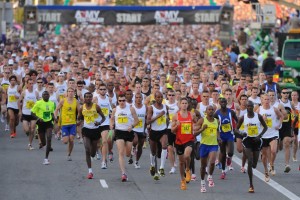Summer weather is in full effect now, which means the options for what bottoms to wear is as wide as it’s ever going to be during the year. From standard jeans to mid-length skirts to short shorts there’s a ton of choice for what to wear. And because here at Socks4Life we’re all a little detail obsessed, we like to make sure our outfits all match, or at the very least that our flip flops don’t clash too much with our gym shorts.

A recurring theme you’ll see throughout this guide is to create contrast between your bottoms and your shoes. Our first example demonstrates this idea of contrast really well. Flared pants have come back in style in the last few years and that’s great especially in the summer, they’re breezy and airy and help keep you cool. They can also make your legs look shorter than they are since they cover so much more of your lower legs and feet. The easiest way to fix this problem is to wear a shoe that gives you a lot of lift, like a wedge or a pair of casual heels. These can actually make your legs look longer since the flare hides most of the shoe.
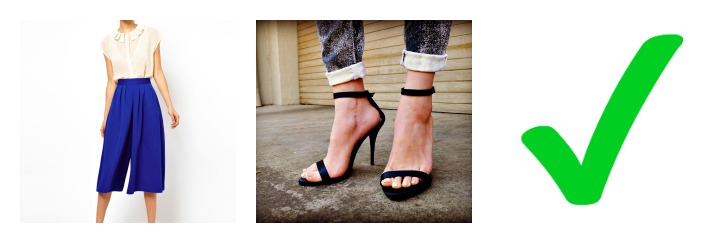
Some advice we can give that’s very similar to our advice for flares is for culottes. The short cut and wide flare is great for hot weather, as well as making you look like you’re about a foot shorter than you actually are. Match your culottes with anything to give you some height and you’ll be golden.
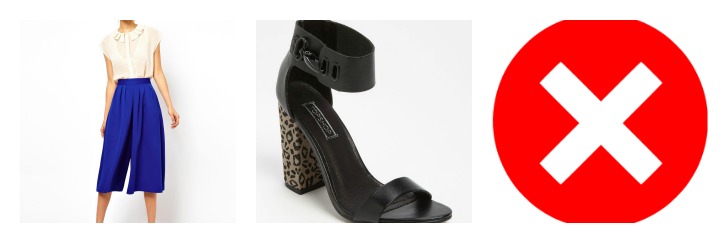
Just watch out for shoes with thick straps that break up your legs into distinct, separate shorter sections.
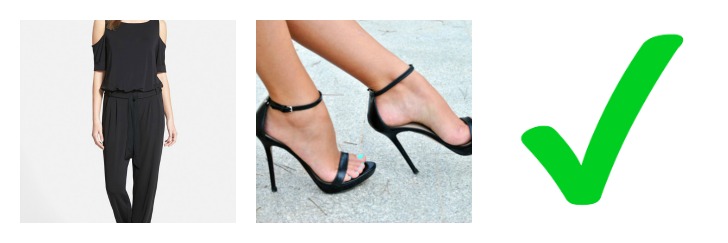
Another piece of fashion that has gotten popular has been the jumpsuit. Jumpsuits can come in a lot of different styles, so we’ll break it down into two broad categories: wide-legged and slim-legged. Our advice for wide-legged jumpsuits is exactly the same as for flared pants, something with some lift to make you look taller. With slim-legged jumpsuits we recommend matching them up with a very minimal shoe, depending on how slim the fit is exactly. You want something that lets the hem of the pant sit without being interfered with by your shoes. So a very minimal flat or a simple pair of heels would work well here.
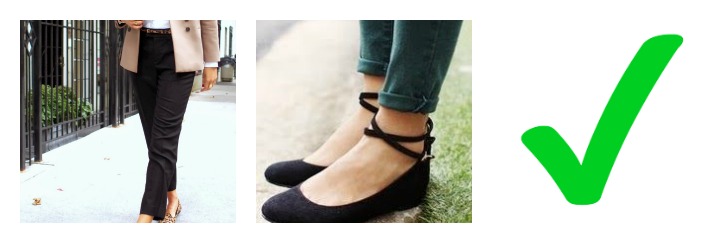
A look that hasn’t really changed much in the last 50 years is the combination of crop pants and flats. It’s a dead simple look that still looks classic. Flats when worn with cropped pants don’t do anything to take away from the figure cut by the pants while still allowing for some personality to show through when it comes to color and accoutrements.
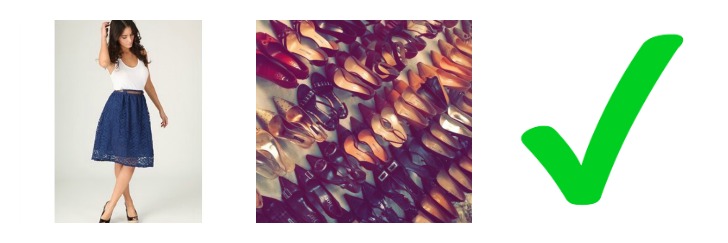
What should you pair up with a mid-length skirt? Pretty much anything you want. They’re like the David Bowie of summer bottoms: There are definitely some things they look better with, but there’s not really anything they look outright bad with. Everything from sneakers to formal-ish heels looks good here, although we will say, continuing with the David Bowie analogy, boots with mid-length skirts is a little more Tonight rather than Ziggy Stardust.
So there you go, our quick guide to how to style your summer bottoms with your summer shoes.

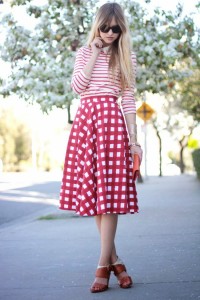 Here’s one of the bigger, overarching guidelines when it comes to mixing patterns. Focus on the colors, rather than the patterns. Generally speaking if all the colors look good together, so will the patterns. There are clearly some obvious exceptions to this, a bold houndstooth and paisley are never going to have a color combo that lets them work together. A quick sidenote on focusing on colors, when it comes to solids you can often get away with using contrasting colors, but when it comes to patterns which are already somewhat contrasting, we highly recommend avoiding contrasting colors as well.
Here’s one of the bigger, overarching guidelines when it comes to mixing patterns. Focus on the colors, rather than the patterns. Generally speaking if all the colors look good together, so will the patterns. There are clearly some obvious exceptions to this, a bold houndstooth and paisley are never going to have a color combo that lets them work together. A quick sidenote on focusing on colors, when it comes to solids you can often get away with using contrasting colors, but when it comes to patterns which are already somewhat contrasting, we highly recommend avoiding contrasting colors as well.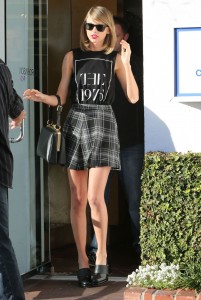 The more basic and graphic the print is, the easier they are to mix together. That thing we just said about avoiding contrasting colors when it comes to patterns? Like most rules in life, there’s an exception to it and that’s black and white patterns. Black and white patterns like stripes, houndstooth, or dots pretty much go with anything. They act as sort of like the neutral of patterns. Taylor Swift is an example of someone that wears a lot of black and white patterned outfits. In the picture, you can see how the combination of her plaid skirt doesn’t clash with the print on her shirt.
The more basic and graphic the print is, the easier they are to mix together. That thing we just said about avoiding contrasting colors when it comes to patterns? Like most rules in life, there’s an exception to it and that’s black and white patterns. Black and white patterns like stripes, houndstooth, or dots pretty much go with anything. They act as sort of like the neutral of patterns. Taylor Swift is an example of someone that wears a lot of black and white patterned outfits. In the picture, you can see how the combination of her plaid skirt doesn’t clash with the print on her shirt.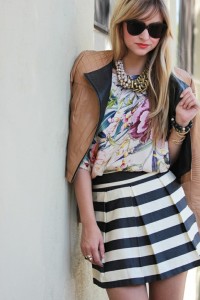
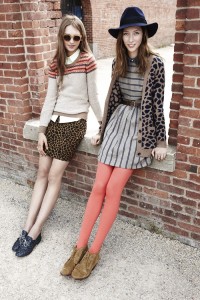
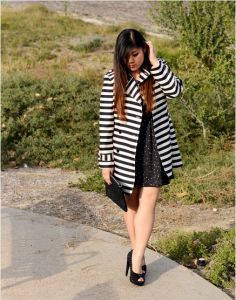
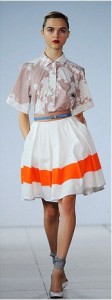 ing of scale and using neutrals to break up an outfit, some some patterns and textures actually work as neutrals by themselves. If you have a pattern with a small scale, like a finely checkered black and white shirt that just looks gray at first glance, that can act as a neutral and be used to work with another pattern. Or pieces that have a very large scale pattern, but only on one part of the piece, like a skirt with a thick stripe at the very bottom. You won’t have any issues pairing that skirt up with a patterned blouse.
ing of scale and using neutrals to break up an outfit, some some patterns and textures actually work as neutrals by themselves. If you have a pattern with a small scale, like a finely checkered black and white shirt that just looks gray at first glance, that can act as a neutral and be used to work with another pattern. Or pieces that have a very large scale pattern, but only on one part of the piece, like a skirt with a thick stripe at the very bottom. You won’t have any issues pairing that skirt up with a patterned blouse.
